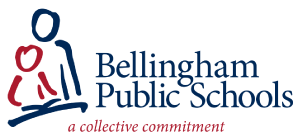When using a process based on a student’s response to scientific, research-based and/or evidence-based intervention that may be used for the identification of students with a specific learning disability, the district will implement the Multi-Tiered Systems of Support (MTSS) procedures listed below in all or some of its schools, and at all or some grade levels. The district will continue to increase its MTSS efforts to reach districtwide implementation.
The district acknowledges that some assessment systems, progress monitoring tools and tiers of intervention have been developed and are in place for some content areas in some grade levels. The district will develop MTSS structures for Math, English Language Arts and Behavior for all grade levels in the span of three to five years.
The district provides information about its MTSS policy and procedures via district website, which includes a description of parents’ rights under an MTSS process consistent with and at .
Tier I: Core Classroom Instruction
High quality, effective and engaging Tier I instruction is delivered in the general education setting by a general education teacher and is designed to meet the needs of all students. Tier I is for all students and is designed to meet the needs of at least 80 percent of the student population. Differentiated instruction during core learning time is the first response for students who have not yet met academic and non-academic goals.
A. Universal Screening
Universal Tier I instructional screenings in the areas of literacy, math and behavior are conducted at least three times throughout the school year at fixed intervals to identify each student’s level of proficiency. Universal screenings are administered and scored by trained staff. Universal screening results are aggregated at the district, school, grade level, classroom and student level and provided to the school principal and the school-based team within two weeks of the completion of the assessment windows.
Tier II: Strategic Interventions
Tier II strategic interventions will be designed by the teacher or collaborative school-based team and delivered primarily in the general education setting by a general education teacher, but may be delivered in other or additional settings, or by other trained staff as appropriate to the specific Tier II interventions that are scientifically, research-based, or evidence-based instruction matched to student need and in addition to core instruction.
Tier III: Intensive Interventions
Tier III intensive interventions will be designed by the MTSS school team and delivered by the general education teacher or specialist, but is likely to be delivered in other or additional settings, or by other trained staff, as appropriate to the specific intervention. Tier III intensive interventions are scientifically, research or evidence-based, matched to student need, and implemented with integrity. Tier III interventions will be in addition to regularly scheduled core instruction in the general education curriculum, and will be delivered in group settings smaller than those for intervention delivered in Tier II, and with an increased frequency (i.e., five times per week) and duration, but not less than six weeks, and/or intensity (i.e., 60 minutes per session) than provided within Tier II.
Progress Monitoring Tier II and Tier III Interventions:
Students receiving Tier II and Tier III interventions will have their progress monitored at least every 3-6 weeks, or more frequently as determined by the school-based team and the approach being used, against established benchmarks. The student’s family will be provided information about their student’s progress within the intervention based on progress monitoring.
A. Responsiveness and Non-Responsiveness to Tier II and Tier III Intervention
School-based teams will collaboratively review the progress of students in interventions at regular intervals throughout the year. The team will determine whether:
- Additional diagnostic assessments are warranted, and if so, in what areas and by whom;
- Additional changes to the instructional or behavioral interventions are required;
- Intervention should continue because progress monitoring data indicate the intervention is working even though the student has not yet met benchmarks;
- The student should return to Tier I and/or Tier II core instruction with continued progress monitoring because the student has met benchmarks; or
- The student requires more intensive intervention.
These procedures are designed to permit students to move between tiers of intervention based on the student’s progress against benchmarks as determined by the MTSS team, and to insure families are informed about their students’ performance, progress and plans within those tiers of intervention.
